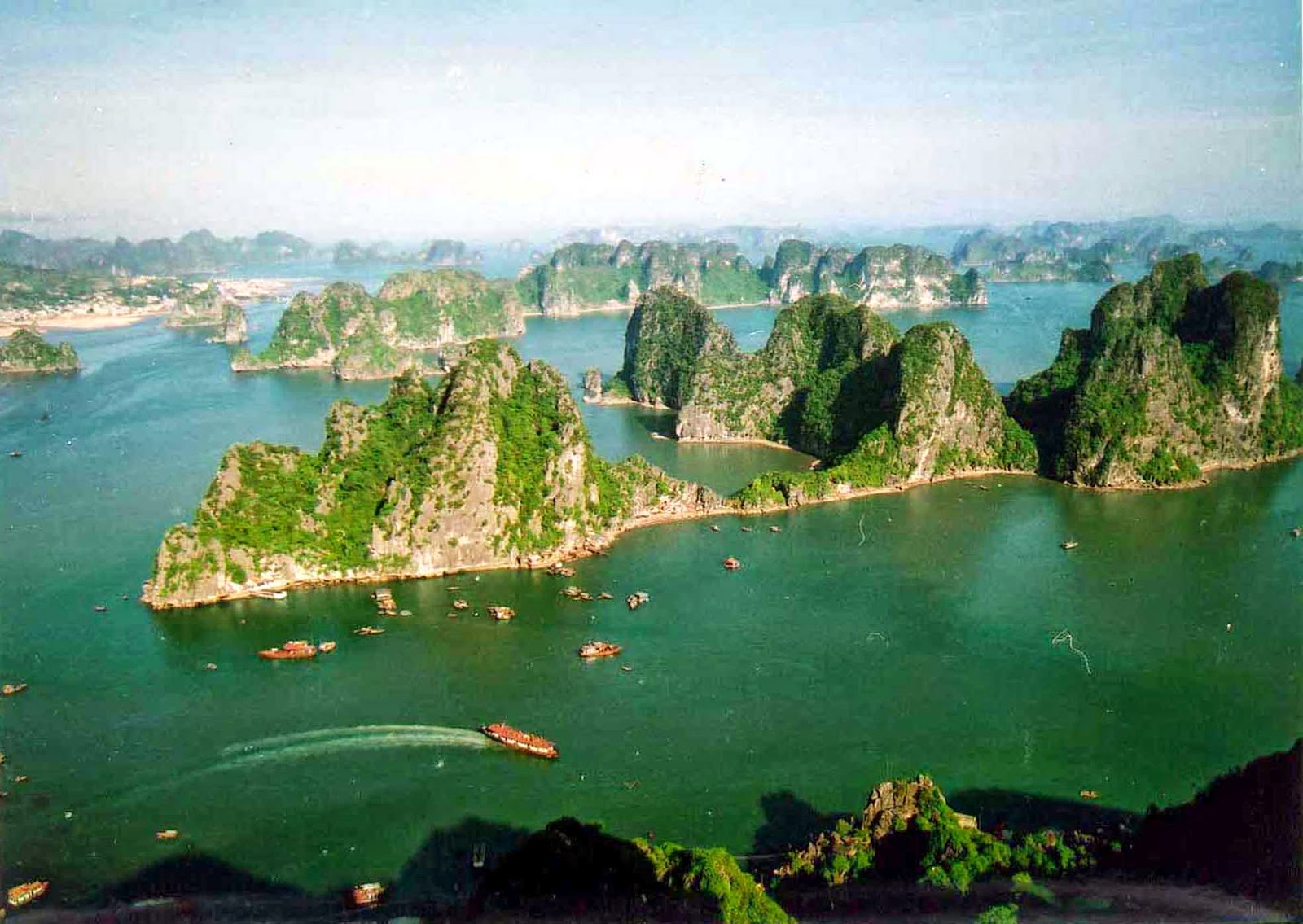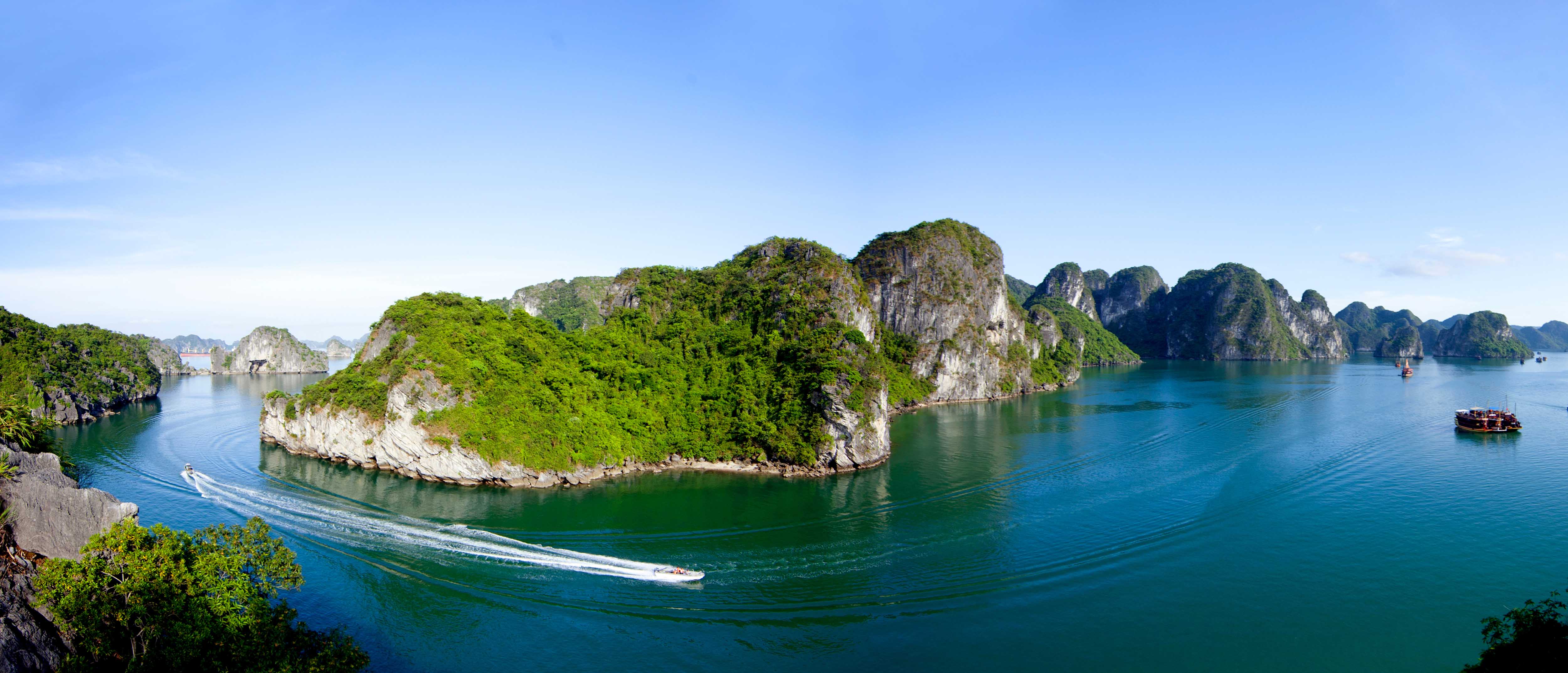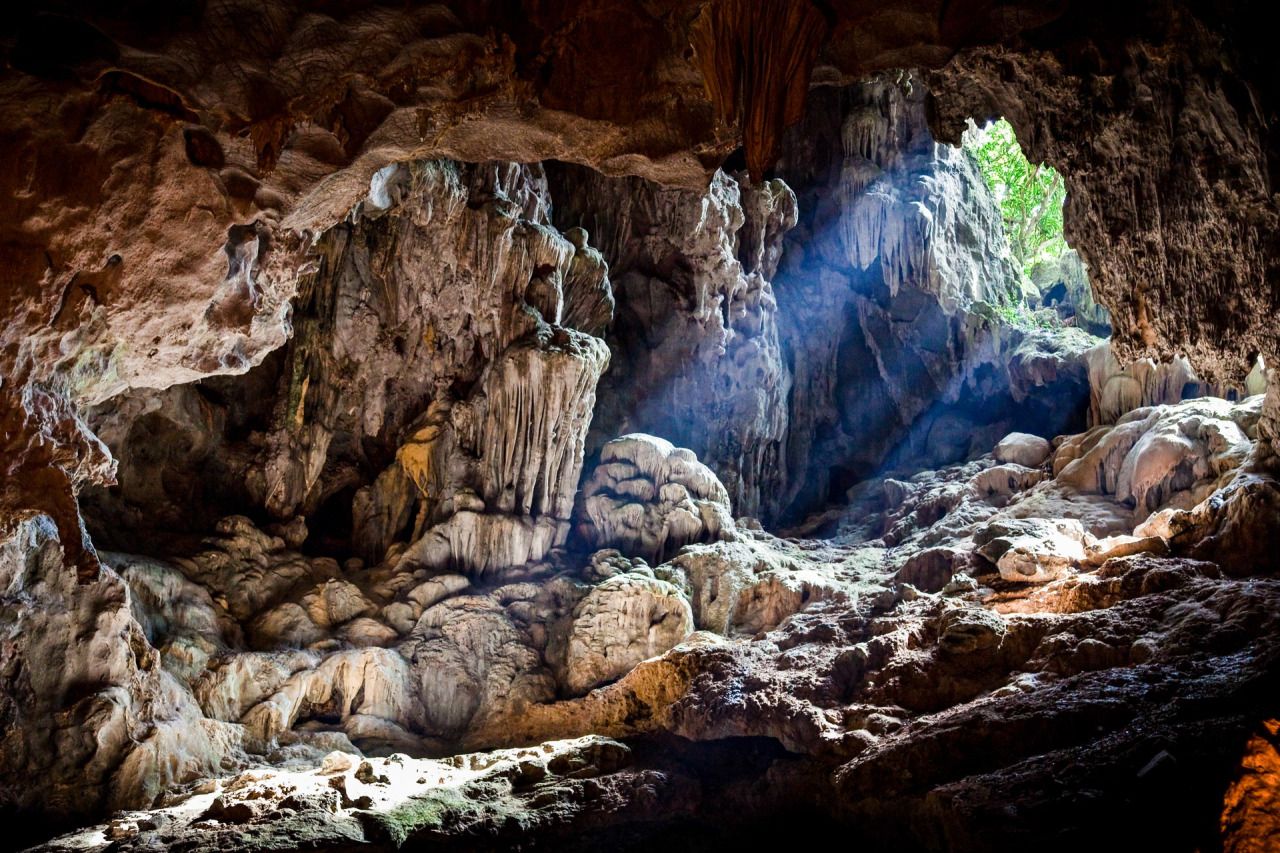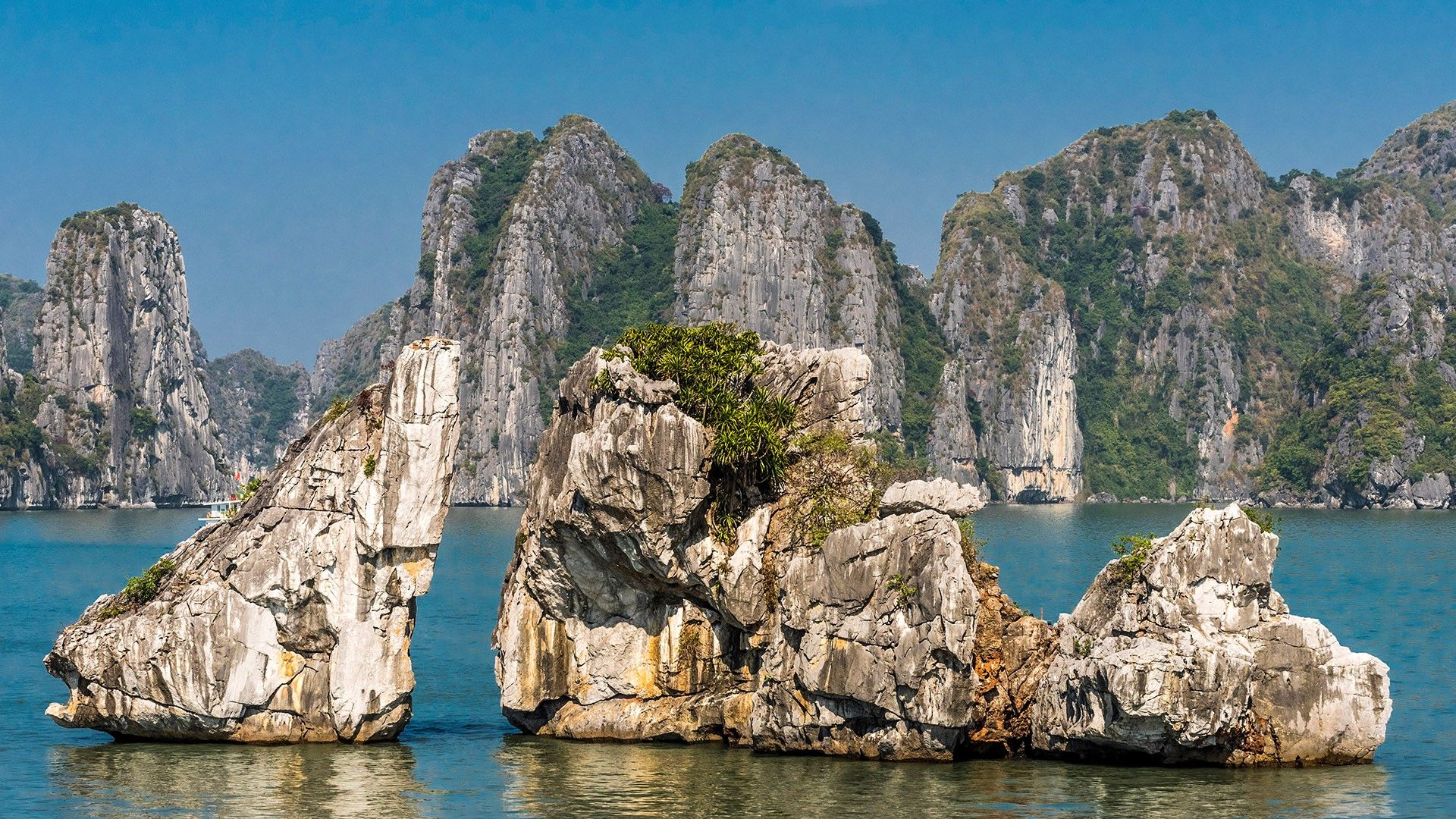
Ha Long Bay is a world-renowned natural wonder located in the northeastern region of Vietnam. The bay is famous for its breathtaking scenery, with over 1,600 limestone karst formations rising majestically out of the emerald-green waters. These formations, often referred to as "pillars," are one of the most distinctive features of the bay and are a testament to the fascinating geological history of the region. In this article, we will explore what makes up the pillars of Ha Long Bay, including the geology of the region, the characteristics of the pillars themselves, and the stunning natural beauty that attracts millions of visitors to this UNESCO World Heritage Site each year.

Geology of Ha Long Bay
Ha Long Bay's unique geology is the result of millions of years of geological processes, including tectonic activity, sea level changes, and erosion. The limestone karst formations that make up the pillars of Ha Long Bay began to form over 500 million years ago when the region was still covered by a shallow sea. The sea was home to a vast array of marine organisms, including corals, mollusks, and other animals that built up the limestone deposits that make up the pillars.
As the sea levels changed and the land rose and fell over time, the limestone deposits were exposed to the elements. The acidic rainwater slowly eroded the limestone, creating a network of underground rivers and caves. As the water continued to flow, it gradually wore away the softer parts of the limestone, leaving behind the distinctive karst formations that we see today.

The pillars of Ha Long Bay come in a variety of shapes and sizes, ranging from small, jagged spires to towering cliffs that rise hundreds of meters above the water. Some of the most famous formations in the bay include Stone Dog Island, Fighting Cock Island, and Thumb Island, which are named for their resemblance to animals or objects.
Each of these limestone pillars is made up of layers of calcium carbonate that have been shaped by the elements over time. The calcium carbonate is the result of the accumulation of the remains of marine organisms that lived in the shallow sea that once covered the region.
In addition to the limestone pillars, Ha Long Bay is also home to a number of other geological formations, including sea caves, grottoes, and arches. These features are the result of the same processes that shaped the pillars and contribute to the unique and stunning natural beauty of the region.
Characteristics of the Pillars

The limestone karst formations that make up the pillars of Ha Long Bay come in a variety of shapes and sizes. Some are small, jagged spires that rise only a few meters above the water, while others are massive cliffs that tower hundreds of meters into the sky. The shapes of the pillars are a result of the complex geological processes that have taken place in the region over millions of years.
Many of the limestone formations in Ha Long Bay are named after animals or objects that they resemble. For example, Fighting Cock Island is named for its resemblance to a rooster, while Thumb Island is named for its distinctive thumb-like shape. These unique formations have become iconic symbols of Ha Long Bay and are beloved by locals and visitors alike.
In addition to their shapes, the limestone pillars of Ha Long Bay are known for their stunning colors and textures. The rock is often pitted and weathered, creating intricate patterns and formations that are a testament to the power of erosion. The color of the limestone can range from bright white to deep gray, depending on the mineral content and age of the rock.
Interested in exploring the stunning caves of Ha Long Bay? Check out this comprehensive guide to Ha Long Bay Caves for an in-depth look at some of the most unique and beautiful caves in the region. From the mysterious Sung Sot Cave to the stunning Hang Dau Go Cave, there's no shortage of natural wonders to discover in this fascinating corner of the world.
The limestone formations of Ha Long Bay are not static; they are constantly changing and evolving over time. The erosion caused by wind and water slowly reshapes the pillars, creating new shapes and patterns that are unique to each formation. As a result, no two pillars in Ha Long Bay are exactly alike, making each one a one-of-a-kind masterpiece of nature.
Natural Beauty of the Pillars
The natural beauty of the limestone pillars of Ha Long Bay is nothing short of awe-inspiring. As visitors cruise through the bay, they are treated to a landscape that seems almost otherworldly, with towering cliffs, jagged spires, and verdant vegetation that seems to defy gravity.

The pillars are particularly striking at dawn and dusk when the sun casts a warm golden light over the bay, creating a breathtaking contrast between the dark shadows of the limestone formations and the glittering water below. The stillness and serenity of the bay are further accentuated by the mists that often shroud the pillars, lending an ethereal quality to the scenery.
The limestone cliffs themselves are also a sight to behold, with intricate patterns and textures etched into their surfaces. Many of the pillars are pockmarked with caves and grottoes, some of which are large enough to accommodate entire boats. These caves are often filled with crystal-clear water, and visitors can explore them by kayak or small boat.
The natural beauty of Ha Long Bay is not limited to the pillars themselves. The bay is home to a rich ecosystem of flora and fauna, including several species of monkeys, birds, and fish. Visitors can often spot these creatures as they cruise through the bay, and the lush greenery that surrounds the pillars provides a striking contrast to the stark white limestone.
Overall, the natural beauty of the pillars of Ha Long Bay is a testament to the power and majesty of nature. The combination of the unique geology of the region, the stunning play of light and shadow, and the rich ecosystem that thrives in and around the pillars make this one of the most unforgettable landscapes on earth.
In conclusion, the pillars of Ha Long Bay are a stunning example of the power of natural forces to shape the landscape over millions of years. The geology of the region, with its combination of marine organisms, sea level changes, and erosion, has created a unique and otherworldly landscape that is unlike anything else on earth. The limestone pillars themselves come in a wide variety of shapes and sizes, with many of them named for their resemblance to animals or objects. Despite their sometimes whimsical appearance, the pillars are a testament to the immense power of nature and the endless fascination that it holds for us.

The natural beauty of Ha Long Bay is a wonder to behold, with its serene waters, lush green islands, and towering limestone formations. It is no wonder that the bay is such a popular destination for tourists from all over the world, and its designation as a UNESCO World Heritage Site is a testament to its importance as a natural and cultural treasure. Whether you are a geology enthusiast, a nature lover, or simply someone looking for a breathtaking travel experience, the pillars of Ha Long Bay are sure to leave a lasting impression on your heart and mind.
Travel Guides
- Halong Bay Caves: The Ultimate Guide to Exploring Vietnam's Hidden Treasures
- When Is rhe best time to visit halong bay?
- Discover the Best Things to Do in Halong Bay: Your Ultimate Guide
- 20 Things You Should Know Before Traveling to Halong Bay
- Top 10 Most Luxurious Overnight Cruises In Halong Bay 2025
















